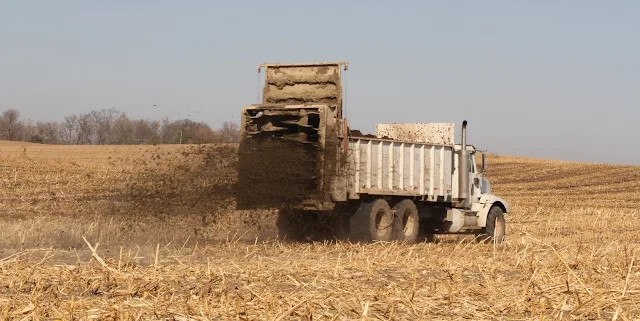 |
By: Melissa Wilson, Extension manure management specialist
Manure application rate guidelines in Minnesota have recently been revisited and updated as needed to reflect recent research findings for nitrogen and phosphorus needs of crops.
Check out the updates here: z.umn.edu/ManureRates
What’s new in 2019?
Nitrogen: The corn nitrogen guidelines recommended by the University of Minnesota were recently updated for non-irrigated soils. These guidelines use the Maximum Return to Nitrogen (MRTN) approach, which relies on calculating the price ratio for the cost per pound of nitrogen divided by the value of corn per bushel. For manure, we suggest using the 0.05 price ratio MRTN as the maximum rate of manure nitrogen that should be applied. This is relevant to those that have manure readily available at a low (or no) cost. For those that pay a premium, the 0.1 price ratio MRTN, or higher, may be more relevant and will result in a lower application rate. Lower application rates may also be considered for economic reasons, environmental concerns, or for fields with lower productivity soils.More details about fertilizing corn and the various MRTN recommendations can be found here: z.umn.edu/CornFertilizer
Phosphorus: More and more producers are interested in applying manure in a way that limits the build-up of phosphorus in their soils. One way to do this is to base manure application rates on replacement of phosphorus that will be removed from the soil by the upcoming crop (in the harvested portion). The updated manure application rate guidelines cover the steps to do this.
Another important step in calculating application rates is to consider all sources of nitrogen to the crop. This includes nitrogen from irrigation water, credits from manure or other organic nitrogen sources that were applied in the past two years, and credits from legumes. Why is that? Because research across the U.S. Midwest has shown that applications of nitrogen above the economically optimum nitrogen rate for a crop significantly increases nitrogen leaching.
For the latest nutrient management information, subscribe to Minnesota Crop News email alerts, like UMN Extension Nutrient Management on Facebook, follow us on Twitter, and visit our website.
Support for this project was provided in part by the Agricultural Fertilizer Research & Education Council (AFREC).
Important considerations
Remember that not all nitrogen or phosphorus in manure is available the first year. Some is “plant-available” right away and some is tied up in the organic matter and eventually breaks down to become plant-available. It is important to calculate the first year plant-available nitrogen (PAN) or plant-available phosphorus (PAP) in order to figure out application rates.Another important step in calculating application rates is to consider all sources of nitrogen to the crop. This includes nitrogen from irrigation water, credits from manure or other organic nitrogen sources that were applied in the past two years, and credits from legumes. Why is that? Because research across the U.S. Midwest has shown that applications of nitrogen above the economically optimum nitrogen rate for a crop significantly increases nitrogen leaching.
Where can I find more information?
---For the latest nutrient management information, subscribe to Minnesota Crop News email alerts, like UMN Extension Nutrient Management on Facebook, follow us on Twitter, and visit our website.
Support for this project was provided in part by the Agricultural Fertilizer Research & Education Council (AFREC).
Comments
Post a Comment